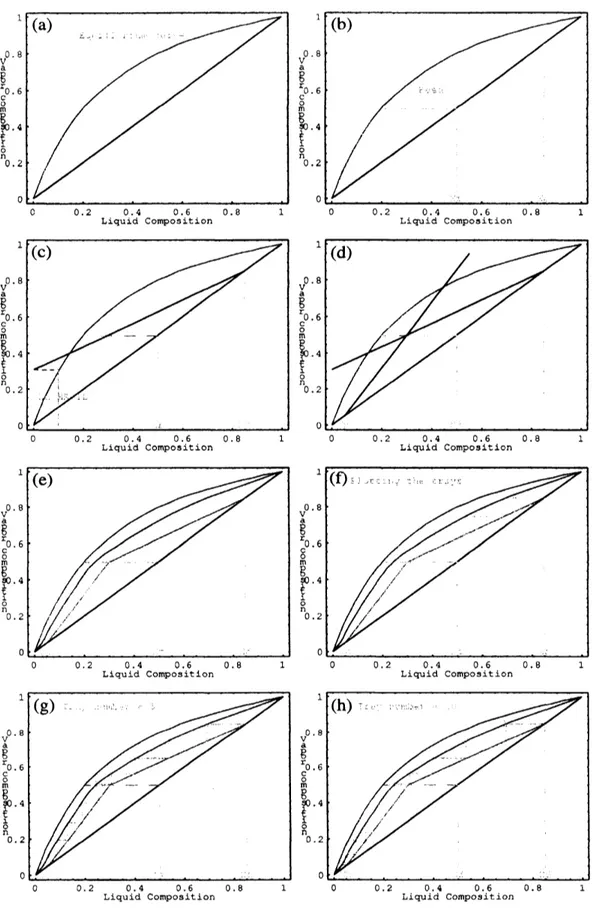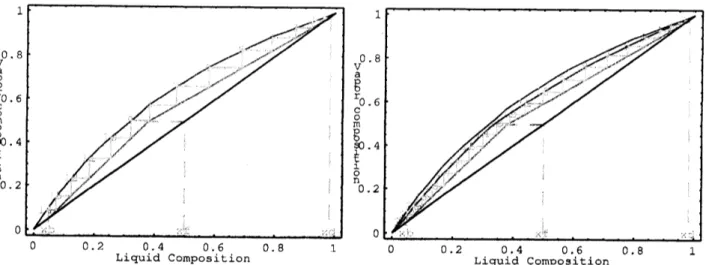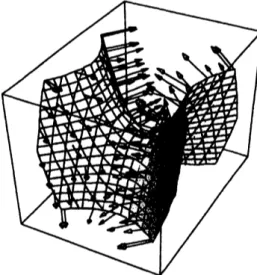Facing the Challenges
of the
New European
Space
of Higher Education Through
Effective
Use
of
Computer Algebra Systems
as
an
Educational Tool
Andr\’es
Iglesias
Department
of
Applied Mathematics and
Comp.
Sciences
University
of
Cantabria,
Avda.
de los
Castros
s/n, E-39005,
Santander, Spain
iglesias@unican.es
http://personales.unican.es/iglesias
Abstract
Academic institutions of most European countries are now in the midst of the
process of overall convergence of studies at university level, the so-called European
Space
of
HigherEducation. This process, bom from Bologna’s declaration, impliesa dramatic change in our way of teaching and learning. This change is specially
challenging in very difficult subjects such as Mathematics and other scientific dis-ciplines, which typically suffer from high failure rates. It’s author’s opinion that
Computer Algebra Systems are very powerful tools (arguably the best ones) to
face the challenges of this new approach to Higher Education. To support such
claims, some examples of Mathematica packages developed by the author during
the last few years for teaching different subjects in scientific degrees (according
to the principles and regulations ofthe European Space of Higher Education) are
briefly described.
1
Introduction
Since its signature in 1999, Bologna’s Declaration has epitomized the much-needed,
largely-demanded process of changes umdertaken in most European countries in order
to reform their Higher Education system. This agreement is not only designed for
new
curricula and academic regulations; it also accounts for
a new
approach to teaching andlearning (in author’s opinion, the most important issue of this process). This challenge
is specially important in very difficult subjects such
as
Mathematics and other scientificdisciplines, which typically suffer from high failure rates. Several academic reports have
pointed out the difficulties
our
students face when studying (and suffering) mathematicalsubjects. Students and professors at university often cite
lack
of preparation from highRight or not, the truth is Mathematics is very much practice-based.
Students
mayget
a
concept in the classroom, but they will certainly lose it if notreinforced
byhome-work. For doing so, students need to be provided with good supporting materials
so
that they
can
effectively leamby themselves. High-quality, helpful educationalmaterialsallow underachievingstudents catching up on belated
as
signments and get extra time forsuccessful
backtracking.
It is at this point where Computer Algebra Systems (CASon-wards)
can
reallypave the way, making the most with less. In author’s opinion,CAS
are
very powerful tools (arguably the best ones) to face the challenges ofthis
new
approachto Higher Education. This paper aims at supporting such claims by presenting some
examples of Mathematica packages developed by the author during thelast few years for
teaching different subjects in scientific degrees according to the principles and regulations
of the European Space of Higher
Education.
2
Some Illustrative
Examples
2.1
Example 1:
Binary Distillation
Column
This section is about a
Mathematica
program for distillation column design described originally in [7]. This example is intended for students of Chemical Engineeringde-gree who
can use
a CASas
a
useful tool for their symbolic/numerical computations andgraphicaloutput. For the sake of simplicity, weconsider thecaseofcontinuousdistillation
columms for binary mixtures. However,
our
approach is very general as itcan
be appliedto any other kind of distillation columns by simply replacing
our
assumptions by thoseofeach specific
case.
In this example,we
assume
that thecolunms are
designed throughMcCabe-Thiele’s
procedure [11, 12]. This is a graphical method whichdetermines
the number of stages required for thedesired
degree of separatIon and thelocation
of the feed trayas functions
ofsome
parameters of the problem. The program isgeneral enoughto analyze
a
number of different mixtures under different conditionsas
wellas
the roleof many relevant parameters of this process. To this purpose,
an
adequate combinationof symbolic and numerical calculations is achieved. From these calculations, both
nu-merical and grapluical outputs
are
obtained. In fact, the graphical output is actuallya
Mathematica
movie ofMcCabe-Thiele’s
diagram.The method has beenimplemented as a Mathematicapackage, called MTBDC.$m$, where
this acronym stands for McCabe- Riele Binary Mstillation Column. This section
de-scribes
one
example of application of this program toa
equimolar $(i.e. x_{f}=0.5)$ binarymixture whose relative volatility is $\alpha=4$
.
Our
target is to designa
distillation column that obtainsa
destillate with 85 % of purity $(i.e. x_{d}=0.85)$ and bottoms with 5 % ofpurity $(i.e. x_{b}=0.05)$
.
The first comandReflux[xd,xf$l$alpha] determines three values:
the reflux, and the liquid and vapor compositions of the
more
volatile component:In[1] $:=$ Needs$[^{1t}MCBDC$‘$||]$
In[2] $:=$ Reflux[0.85,0.5,4]
Out[2] $:=\{1.75,0.2,0.5\}$
Then, the command OperatingLines [xd,xf, alpha] is applied to the calculation of
the operating lines of the rectification section and the stripping section, shown in Fig.
Figure 1: McCabe-Thiele’s method forbinarydistillationcolumn design: $(a)-(h)$ different
Figure 2:
McCabe-Thiele’s
method foran
equimolar heptane-octane mixture with $x_{d}=$0.98, $x_{f}=0.5,$ $x_{b}=0.05$ and $\alpha=2.17$: (left) $E_{f}=1$; (right) $E_{f}=0.65$
.
trays of the column
as
wellas
the location of the feed tray. To this end,we
define theMTPlot command, which accepts five different arguments, namely, $x_{d},$ $x_{f},$ $x_{b},$ $\alpha$ and the
efficiency $E_{f}$
.
For example, MTPlot [0.85,0.5,0.05,4,0.6] returns a sequence of 49frames corresponding to the different steps of McCabe-Thiele’s method. Eight of these
frames
are
displayed in Figure 1.One
of the most remarkable Mathematica features in this work is the possibility togenerate $Q\dot{m}ckTime^{TM}$ movies. For example, thedifferent images in Figure 1 correspond
to eight frames of
a
QuickTime movie that reproduces McCabe-Thiele’s method in agraphical way. The movie is automatically generated from the MTPlot command.
Dif-ferent values of its arguments
are
associated with different initial mixtures and$/or$ finalproducts. This option is specially valuable for educational and training purposes,
as
wecan
obtaina
virtually unlimited set of distillation columns in a fast and simple way.McCabe-Thiele’s
method does not allow us to determine all relevant distillationcol-umn
parameters and thus,some
additional equations must also be considered. Thediscussionis beyond the scope of this paper and will not be included here. At this time it
is enough to say that a number of different Mathematica commands incorporating these
additional
equations have been implemented in the MTBDC.$m$ package. For example, ifwe
start with
an
equimolarmixture of heptane-octane with arelative volatility $\alpha=2.17$ andefficiency $E_{f}=1$ and
we
wish to obtaina
destillate with 98 % of heptme and bottomswith only
a
5% of heptane, the column parameterscan
be determinedas:
In[3] :$r$ ColumnParameters
$[0.98,0.05,0.5,2.17,1]$
$Out[3J:=Number$
of
trays $=14$ (rebolier included)Number
of
Feed $tray=9$Column height $=8.4$ meters
Distance
between trays $=0.6$ metersFigure 2 shows the
McCabe-Thiele’s
diagram of the columnfor totalefficiency $E_{f}=1$(left) and when the efficiency of the process is only a 65
%,
that is $E_{f}=0.65$ (right).In the
first
case, thecolumn
has only 14 trays and its height is8.4
meters, while in the secondcase
the
number of trays increases up to22
and the column height isnow
13.2
meters.2.2
Example 2:
Solving
Inequalities
Solving inequalities is
a
very important topic in Mathematics, with outstandingapplica-tionsinmany
areas
oftheoretical and applied science. Inequalitiesplayakey role becausemany problems cannot be completely and accurately described by using only equalities.
However, since there is not
a
general methodolody for solving inequalities, theirsym-bolic computation is still a challenging problem in computational algebra. Depending on
the kind of functions involved, there
are
many “specialized” methods suchas
cylindricalalgebraic decomposition, Gr\"oebner basis, quantifier elimination, etc. [1, 6, 8, 13].
This section
uses a
nonstandard Mathematica package [9], InequationPlot, fordis-playing the two-dimensional solution sets of several inequalities. In particular, it extends Mathematica’s capabilities by providing graphical solutions to many inequalities (such
as
those involving trigonometric, exponential and logarithmmic functions) that cannot besolved by using the standard Mathematica commands and packages [14, 15]. The package
also deals with inequalities involving complex variables by displaying the corresponding
solutions on the complex plane.
Inequalities involving trigonometric functions cannot be solved by standard
Mathe-matica commands. For example, let
us
try to display the solution sets of each of theinequalities
$sin(x+y)> \frac{1}{2}$ (1)
and
$sin(2x)+cos(3y)<1$ (2)
on
the set $[$-8, $8]\cross[-8,8]$ by using the standard Mathematica commands. In this case,we
mustuse
the command InequalityPlot of the Mathematicapackage:In[41 $:=<<Graphi$cs‘ InequalityGraphics
Unfortunately, since the regiondefined by inequality (1)
on
the prescribed domain cannotbe broken down into cylinders, Mathematica fails to give the solution:
In[5] $:=InequalityPlot$$[$Sin
$[x+y]>1/2,$
$\{x,$$-8,8\},$$\{y,$$-8,8\}]$Out[5]: $=InequalityPlot:$ : region:
The region
defined
by $sin(x+y)>1/2\wedge-8<=x<=8\wedge-8<=y<=8$ could not bebroken down into cylinders.
On
the contrary, the previous inequalitiescan
be solved by loadingour
package:In[6] $:=<<$InequationPlot‘
which includes the command
Inequat$i$onPlot [ineqs, $\{x$,xmin,
xmax},
$\{y$,ymin,ymax},
opts]for displaying the two-dimensional region of the set of points satisfying the inequalities
ineqs of real numbers inside the square [xmin,xmax] $\cross[ymin$,ymax$]$. For example,
inequalities (1)$-(2)$
can
be solvedas
follows:In[7] $:=InequationPlot$ [$*,$$\{x,-8,8\},$$\{y,-8,8\}$,AspectRatio-$>Automat$ ic]& /@
$\{Sin[x+y]>1/2$,Sin$[$2 $x]+Cos[3y]<1\}$
$\infty\inftyarrow$ $\sim\lrcorner-$ $\}-$ $-$ $-$ $l$ $-$ $(\sim$
$\epsilon\}- \mathfrak{l}$ $-$ $\sim$ $-$. $-\overline{\cdot\prime\epsilon}-\backslash \overline{\epsilon}_{\vee}---1$ . 1 – —-$[$ $arrow$ $\sim$ $1$ $\}$ $($ $r\sim$ $\epsilon|$ $r\backslash$ $\nearrow\backslash$ $r\cdot-\backslash$ $’rightarrow$
Figure 3: Some examples of inequality solutions
on
the square [-8, 8] $\cross[-8,8]$: (left)$sin(x+y)> \frac{1}{2}$; (right) $sin(2x)+cos(3y)<1$.
Similarly, Fig. 4 displays the solution sets of the inequalities $F(x)+F(y)=1$ and
$F(x^{2})+F(y^{2})=1$ (where $F$stands for the floor function)
on
thesquares $[$-4,$4]\cross[-4,4]$and [-2, 2] $\cross[-2,2]$, respectively. We would like to remark that the Mathematica
com-mand InequalityPlot does not provide any solution for these inequalities either.
Figure 4: Some examples of inequality solutions: (left)
floor
$(x)+floor(y)=1$ on thesquare $[$-4,$4]\cross[-4,4]$; (right)
floor
$(x^{2})+floor(y^{2})=1$on
the square $[$-2,$2]\cross[-2,2]$.Theprevious command, InequationPlot,
can
begeneralized to inequalities involvingcomplex numbers. The
new
commandComplexInequationPlot [ineqs, $\{z$,
{Rezmin, Rezmax},
{Imzmin,
Imzmax}},
opts]displays the solution sets of the inequalities ineqs of complex numbers inside the square
functions appearing within the inequalities need to be real-valued functions ofacomplex argument, $e.g$
.
$Abs,$ $Re$ and $Im$. For example:In[8] $:=ComplexInequationPlot$ [$\#,$$\{z,$$\{-2,3\},$$\{-3,3\}\}$,AspectRatio-$>$Automatic]& /@ $\{1<Abs[z^{rightarrow}2-z+1]<4,1<Abs[z^{-}2-2z]/$Abs$[z^{\sim}2+3]$く4$\}$
$Out[ 8\int:=See$ Figure 5
Figure 5: Some examples of inequality solutions for $z=a+b\in \mathbb{C}$ such that $a\in[-2,3]$
and $b\in[-3,3]$: (left) $1<||z^{2}-z+1||<4$; (right) $1< \frac{||z^{2}-2z||}{||z^{2}+3||}<4$.
$5—–\wedge^{\wedge}----\sim\sim\backslash -\sim;^{\sim}\backslash \vee\neg\sim\sim\backslash$
$1.\sim$ $\vee\backslash \backslash \backslash \backslash \backslash [_{\backslash }\backslash \backslash \backslash \backslash \backslash \llcorner$
$\sim\sim$
$–\wedge--arrow\sim$
$\sim_{s}-$
$\ell-\sim\backslash --\sim--\backslash \sim\vee^{\backslash }\cdot\backslash \wedge^{\backslash }\vee^{\backslash }\backslash \sim\backslash \backslash \backslash \sim\backslash \backslash \sim\backslash \backslash \backslash \backslash \backslash 1_{\backslash }^{\backslash }\backslash \backslash \backslash \backslash \backslash \backslash$
$\sim\sim\sim$
$\backslash f^{\mathfrak{l}}\backslash \backslash \backslash \backslash$ $\vee---arrow---\sim-$
$\backslash \backslash /\backslash$ $\backslash$
$2_{\backslash }^{-}-\backslash --\sim^{X}’/\sim\backslash \backslash \backslash \sim\backslash _{c}/’\backslash /\backslash /\backslash \backslash \backslash \backslash \backslash \backslash \backslash \backslash \backslash$
$”\nearrow’/$
ノ
$\backslash \backslash \backslash$ $\backslash /\backslash$
$0.5$ 1 1.$\lrcorner$ $2_{\lrcorner}$ 3
Figure 6: Solution sets for the inequality systems: (left) Eq. (3); (right) Eq. (4).
The last example shows how complicated the inequality systems
can
be: inaddition
compositions of these (and other) functions can also be considered. In Figure 6 the
solutions sets of the inequality systems:
$e^{y} \geq 1\wedge log(x)y\geq 1\wedge x\sqrt{y}<4\wedge x-y>\frac{1}{2}$ (3) $log(y)\geq_{\tilde{2}}^{1}\wedge sin(x)y\geq x\wedge cos(e^{x-y})\geq 0\wedge sin(x^{2}+y^{2})>0$ (4)
on
$[1, 10]\cross[0,10]$ and $[0,3]\cross[1,5]$ respectivelyare
displayed.2.3
Example
3:
Gauss
Map
of
Surfaces
This
sectionfocuses
on
a
classical
topic in the field ofDifferential
Geometry: thevi-sualization of the
Gauss
map ofa
surface. Roughly speaking, the Gauss map projectssurface normals onto a unit sphere, providing a powerful visualization ofthe geometry of
a graphical object. On the other hand, dynamic visualization of the Gauss map speeds
understanding
of complex surface properties. This section appliesa Mathematica
pack-age described
in [10], GaussMap, for computing and displaying the tangent and normal vectorfields
and theGauss
map of surfaces described symbolically in either implicit orparametric form. Firstly,
we
load the package: In[9] $:=<$くDifferentialGeometry‘GaussMap 2.3.1 Implicit SurfacesThe ImplicitNormalField command calculates the normal vector field of any implicit
surface in the form $f(x, y, z)=0$ and retums
a
graphical output comprised of the surfaceand suchanormal vectorfield. Thefirstexample is givenby theparaboloid$x^{2}+y^{2}-z=0$:
In[10] $:=ImplicitNormalField[x^{-}2+y^{\sim}2-z,$$\{x, -2,2\},$ $\{y, -2,2\},$$\{z,$$-1,2\}$,
Surf
ace-
$>Tme$,PlotPointsSurface-
$>\{4,7\}$, VectorHead-$>Polygon$]$Out[10]:=See$ Figure 7
The ImplicitGaussMap command of
an
implicit surface returns the original surface and its Gauss map on the unit sphere:In[11] $:=ImplicitGaussMap[x^{\sim}2+y^{\sim}2-z,$ $\{x,$$-2,2\},$ $\{y,$$-2,2\},$$\{z,$$-1,2\}$,
PlotPoints-$>\{4,7\}]$
Out
$[$ll$]$ $:=See$ Figure8
Figure 8: (left) Implicit surface $x^{2}+y^{2}-z=0$; (right) its
Gauss
map. Next example calculates the normal vector field of the surface $z-x^{2}+y^{2}=0$:In[12] $:=ImplicitNormalField[z-x^{-}2+y^{\sim}2,$$\{x, -2,2\},$ $\{y, -2,2\},$$\{z,$$-2,2\}$,
Surf
ace-
$>True$, PlotPointsSurface-
$>\{4,6\}$,VectorHead-$>Polygon$ ,PlotPointsNormalField-$>\{3,4\}]$
Out[12]:$=See$ Figure 9
Figure 9: The surface $z-x^{2}+y^{2}=0$ and its vector normal field.
The Gauss map image of such a surface is obtatned
as:
In[13] $:=ImplicitGaussMap[z-x^{arrow}2+y^{arrow}2,$ $\{x,-2,2\},$$\{y, -2,2\},$$\{z,-2,2\}$,
PlotPoints-$>\{4,6\}]$
Figure
10:
(left) Implicit surface $z-x^{2}+y^{2}=0$; (right) its Gauss map.A
more
complicated example is given by the double toms surface, defined implicitlyby $(\sqrt{(\sqrt{x^{2}+y^{2}}-2)^{2}+y^{2}}-2)^{2}+z^{2}-1=0$ and whose normal vector field is shown
in Figure 11:
In[14] $:=ImplicitNormalField[$$($Sqrt$[$(Sqrt$[x^{-}2+y^{\sim}2]-2$) $2+y^{\sim}2]-2)^{\wedge}2+z^{\wedge}2-1$
.
$\{x,$$-6,6\},$$\{y,-4,4\}_{*}\{z,$$-1,1\}$, Surface-$>True$, VectorHead-$>Polygon$,PlotPointsSurf
ace-
$>\{5.5\}]$Out$[$
14
$]$ $:=See$ Figure11Figure 11: The double torus surface and its vector normal field.
In[15] $:=ImplicitGaussMap[$$($Sqrt$[$(Sqrt$[x^{\wedge}2+y^{\wedge}2]-2$) $2+y^{\text{へ}}2]-2)^{arrow}2+z^{rightarrow}2-1$ ,
$\{x,-6,6\},$ $\{y,-4,4\},$$\{z,-1,1\}$,Pl$otPoints->\{5,5\}]$
Out[15]:$=See$ Figure 12
It is interesting to remark that,
because
the Gauss map is a continuous (in fact,Figure 12: (left) Double torus surface; (right) its
Gauss
map.compact sets.
Since
the double torus is compact, its image is actually the unit sphere.Another example ofthis property is the Lam\’e surface of fourth degree $x^{4}+y^{4}+z^{4}=1$:
In[16]:$=ImplicitNormalField[x^{\sim}4+y^{arrow}4+z^{-}4-1,\{x,-1,1\},$$\{y,-1,1\},$$\{z,-1,1\}$,
Surface-$>Tme$, PlotPointsSurface-$>\{4,6\}$, VectorHead-$>Polygon$]
Out$[$16$]:=See$ Figure 13
Figure 13: The surface $x^{4}+y^{4}+z^{4}=1$ and its vector normal field.
Its corresponding Gauss map image
can
displayed as:In[17] $:=ImplicitGaussMap[x^{rightarrow}4+y^{arrow}4+z^{-}4-1,$$\{x,-1,1\}$,$\{y, -1,1\}$ ,
$\{z , -1,1\}$,PlotPoints-$>\{4.6\}]$
Out$[$17$]:=See$ Figure 14
2.3.2 Parametric Surfaces
As indicated above, the package also deals with surfaces given in parametric form. In the
following example,
we
consider the Mobius strip, parameterized byFigure 14: Lam\’e surface of fourth degree; (right) its
Gauss
map.Figures 15 and 16 show its normal vector field and the Gauss map, respectively.
In[18]:$=$
ParametricNormalField
$[\{Cos[u]+v$Cos$[u]$ Sin$[u/2]$ ,
Sin$[u]+v$ Sin$[u/2]$ Sin$[u],v$ Cos$[u/2]\},$$\{u,$$0,4$ Pi,Pi/10$\}$,
$\{v, -1/2,1/2,0.1\}$,Surf
ace-
$>True$, PlotPoints-$>\{50,7\}$,SurfaceDomain-$>\{\{0,2$ Pi$\},$$\{-1/2,1/2\}\},VectorHead->Polygon$,
HeadLength-$>0.25$,HeadWidth-$>0.1$,VectorColor-$>RGBColor[1,0,0]]$
$Out[18]:=See$ Figure 15
Figure 15: The M\"obius strip and its vector normal field.
In[19]:$=ParametricGaussMap[\{Cos[u]+v$ Cos$[u]$ Sin$[u/2]$ , Sin$[u]+$
$v$ Sin$[u/2]$ Sin$[u],$$v$ Cos$[u/2]\},$$\{u,0,4Pi\},$$\{v$,-1/2,1/2$\}$,
SurfaceDomain-$>\{\{0,2$ Pi$\},$$\{-1/2,1/2\}\}$,PlotPoints$->\{50,7\}]$
$Out[19]:=See$ Figure16
2.4
Example 4:
Solving
Functional
Equations
In this section
we
use
theMathematica
package FSolve [3, 4], implemented to solvefunctional
equations [2, 5].Let’s
start loading the package:Figure
16:
(left) M\"obius strip surface; (right) itsGauss
map.It includes the command: FSolve[$eqn$,
{functions}, {variables},
options] where $eqn$denotes thefunctionalequation tobesolved,
{functions}
isthe listofunknownfunctions,{variables}
is the list of variables and options allows theusers
to consider different domains for the variables (see Table 1) and classes offeasiblefunctions
(see Table 2).Table 1: List of all feasible domains used in the FSolve package.
Table 2:
Classes
offeasible fumctions used in the FSolve package.$g(x)+h(y)$ where $x,$$y\in \mathbb{R}$ and $f,$$g,$$h$
are
continuousfunctions
as:
In[21] $:=$ FSolve$[f[x+y]==g[x]+h[y],$$\{f$,$g,h\},$$\{x,y\}$,Domain-$>Real$,
Class-$>$Continuous]
Out[21] $:=\{f(x)arrow C(1)x+C(2)+C(3), g(x)arrow C(1)x+C(2), h(x)arrow C(1)x+C(3)\}$
where
$C(1),$ $C(2)$and
$C(3)$are
arbitrary
constants. Notethat
a
single equationcan
determine
severalunknown
functions (suchas
$f,$$g$ and $h$ in this example). Notealso thatthe solution
can
depend on one ormore
arbitrary constants and$/or$ arbitrary functions: In[22] $:=FSolve[f[x]*Sin[y]+h[x]*g[y]==0, \{f , g,h\}, \{x,y\}]$$\{\{f[x]arrow 0, g[y]arrow C[0]Sin[y]+C[1]Arb[0][y], h[x]arrow 0\}$,
Out[22]
$:= \{f[x]arrow C[1]Arb[0][x], g[y]arrow-\frac{C[1]Sin[y]}{C[0]}, h[x]arrow C[0]Arb[0][x]\}\}$
In[23] $:=FSolve[k[u]*1[v]==-b[u] , \{k, 1,b\}, \{u,v\}]$
Out[23] $:=$ $\{\{k[u]arrow 0, b[u]arrow 0, l[v]arrow C[0]+C[1]*Arb[0][v]\}$,
$\{k[u]arrow C[0]*Arb[0][u],$ $b[u]arrow C[1]*Arb[0][u],$$l[v]arrow-(C[1]/C[0])\}\}$,
In[24]:
$=FSolve[f[g[x]+h[y]]-s[r[x]+s[y]]==0,$
$\{f,g,h.r,$$s\},$$\{x,y\}$,Domain-$>RealPositive$ ,Class-$>Arbitrary$]
Out
$[$24
$]$ $:=$ $\{\{f[x]arrow s[\frac{x-C|2\rceil-C[3\rceil}{C[1]}],$$g[x]arrow C[2]+C[1]r[x],$$h[x]arrow C[3]+C[1]s[x]\}\}$
Acknowledgments
This
paper
is the printed version ofan
invited talk delivered by the author at RIMS(Research
Institute
forMathematical
Sciences) workshopon
Computer Algebra SystemsandEducation; A Researchabout
Effective
Useof
CAS
inMathematics
Education, KyotoUniversity (Japan), August $29th$
.
2008.
The author would like to thank the organizersof this exciting
RIMS
workshop for their diligent work and kind invitation. Special thanksare
owe
toProf. Setsuo
Takato (Toho University, Japan) for his friendship, hisgreat support and hospitality and for making my stay in Kyoto such a wonderful and
unforgettable experience.
It
was
indeed alovely time I willnever
forget. Doomo antgatooThis research has been supported by the Computer Science National Program of
the Spamish Ministry of Education and Science, Project Ref.
#TIN2006-13615
and theUniversity of Cantabria.
References
[1] Beckenbach, E.F., Bellman, R.E.: An Introduction to Inequalities. Random House,
New York (1961).
[2] Castillo, E., Guti\’errez, J.M., Iglesias, A.: Solving
a functional
equation. TheMathe-matica Joumal, 5(1) (1995) 82-86.
[3] Castillo, E., Iglesias, A., Cobo, A.: A package for symbolic solutions of
fmctional
equations. In: Keranen, V., Mitic, P. (Eds.): Proceedings of the First
Intema-tional Mathematica Symposium. Computational Mechanics Publications, $Southam\triangleright$
ton (England), pp. 85-92.
[4] Castillo, E., Iglesias, A.: A package for symbolic solution of real functional equations
of real variables. A equationes Mathematicae, 54 (1997) 181-198.
[5] Castillo, E., Iglesias, A., Ruiz-Cobo, R.: Functional Equations in Applied
Sciences.
Elsevier Pub., Amsterdam (2005).
[6] Caviness, B.F., Johnson, J.R.: Quantifier Elimination and Cylindrical Algebmic
De-composition. Springer-Verlag, New York (1998).
[7] Ga’lvez, A., Iglesias, A.: Binary distillation column design using Mathematica.
Lec-tures Notes in Computer Science, 2657 (2003) 848-857.
[8] Hardy, G.H., Littlewood, J.E., P\’olya, G.: Inequalities (Second Edition). Cambridge
University Press, Cambridge (1952).
[9] Ipanaqu\’e, R., Iglesias, A.: A Mathematica packagefor solving and displaying
inequal-ities.
Lectures
Notes in Computer Science,3039
(2004)303-310.
[10] Ipanaqu\’e, R., Iglesias, A.: A Mathematica package for computing and visualizing
the Gaussmap of surfaces. Lectures Notes in ComputerScience, 3482 (2005) 492-501.
[11] McCabe, W.L., Thiele, E.W.: Graphical design of distillation columns, Ind. Eng.
Chem., 17 (1925) 605.
[12] McCabe, W.L., Smith, J. C., Harriott, P.: Unit Operations
of
Chemical Engineering,Sixth Edition, McGraw-Hill, Boston (2001).
[13] McCallum, S.: Solving polynomial strict inequalities using cylindrical algebraic
de-composition. The Computer Joumal, 36(5) (1993) 432-438.
[14] Strzebonski, A.: An algorithm for systems of strong polynomial inequalities. The Mathematica Joumal, 4(4) (1994) 74-77.
[15] Strzebonski, A.: Solving algebraic inequalities. The Mathematica Joumal, 7 (2000)


![Figure 4: Some examples of inequality solutions: (left) floor $(x)+floor(y)=1$ on the square $[$ -4, $4]\cross[-4,4]$ ; (right) floor $(x^{2})+floor(y^{2})=1$ on the square $[$ -2, $2]\cross[-2,2]$ .](https://thumb-ap.123doks.com/thumbv2/123deta/5989780.1060724/6.892.92.762.643.917/figure-examples-inequality-solutions-floor-floor-square-square.webp)
![Figure 5: Some examples of inequality solutions for $z=a+b\in \mathbb{C}$ such that $a\in[-2,3]$](https://thumb-ap.123doks.com/thumbv2/123deta/5989780.1060724/7.892.121.778.221.619/figure-examples-inequality-solutions-z-b-mathbb-c.webp)





